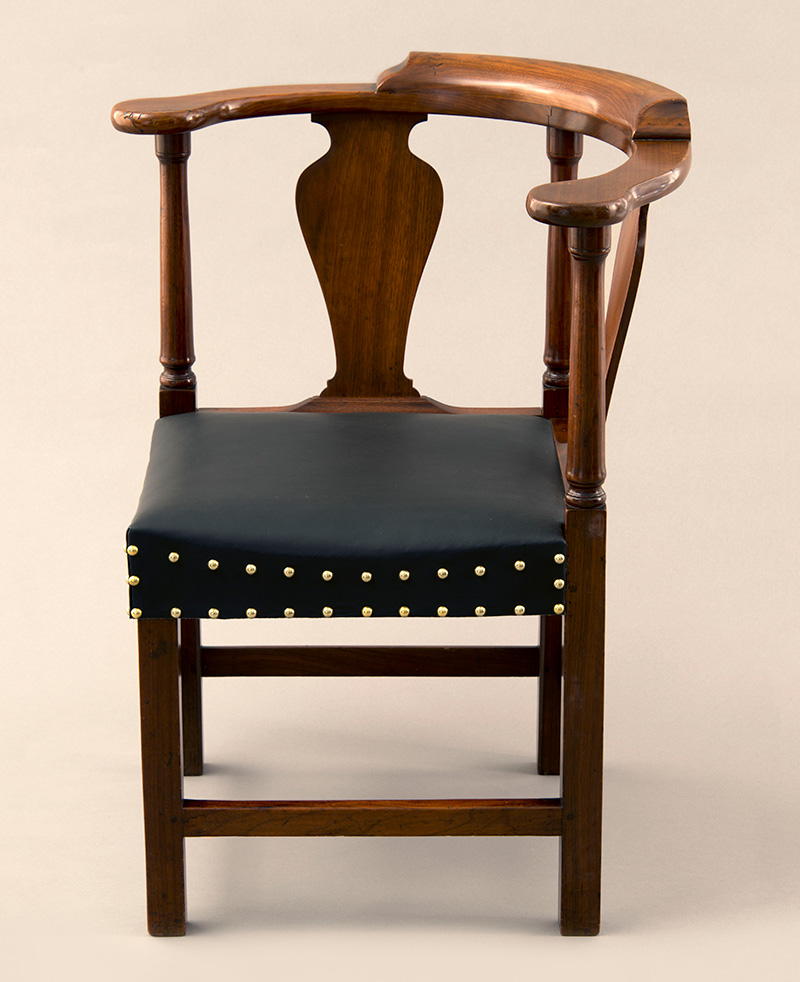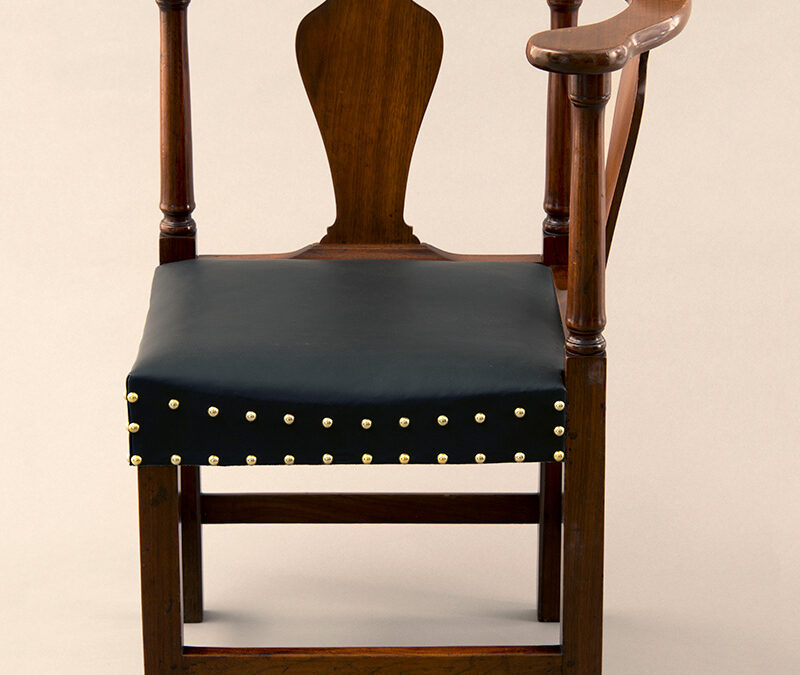Corner Chair

| Maker | Unknown |
| Date of Creation | 1765–85 |
| Location | Eastern Virginia |
| Materials | Black walnut |
| Institution | The Colonial Williamsburg Foundation |
| Credit Line | Gift of Mrs. Elizabeth Gribbel Corkran in memory of John Gribbel |
| Accession Number | 1969-285 |
| Photo Credit | Colonial Williamsburg Foundation |
This chair has a credible tradition of ownership by Patrick Henry (1736–99), having descended through his family at Red Hill, the Charlotte County, VA, plantation where he spent the last years of his life. The only seating furniture listed in Henry’s estate inventory were sets of Windsor chairs and one lot containing “1 Arm & 12 plain Walnut chairs.” Possibly the “1 Arm,” this chair remained at Red Hill until 1910 when it was sold by Henry’s descendants at auction in Philadelphia along with many of his papers and personal possessions.
Located in Virginia’s southern Piedmont, Charlotte County was a rural region that supported few full-time furniture makers in the 18th century. Despite the chair’s simple form, it is unlikely that the chair was made there. With its skillfully turned columnar arm supports and carefully executed details, the chair almost certainly was produced in one of eastern Virginia’s urban centers and then shipped up-country to Charlotte. Unfortunately, the details are so typical of most chairs made in eastern Virginia that it is impossible to assign its production to any particular town, and Henry’s frequent moves obscure the issue further. In the early 1770s, he resided at Scotchtown, an estate in Hanover County north of the small-but-growing town of Richmond. During the Revolution, Governor Henry lived in Williamsburg, where he had access to that city’s cabinetmakers and also to Norfolk artisan John Selden (c. 1743–77 or 1778), who supplied furniture for the Governor’s Palace in 1776. Later, at Red Hill, Henry lived within the district whose market center was at Petersburg. Neat and plain Anglo-influenced chairs more or less similar to this one were produced in all of these communities over many years.
The use of over-the-rail upholstery on chairs is quite unusual in America and was by no means common on Southern seating furniture of any form until the early national period. That the maker of this chair may have been unfamiliar with the practice is suggested by his unusual approach. Seats covered over the rail generally feature a stuffed roll along each of the exposed seat rails. To produce these rolls, or “edges” as they were sometimes called, required the specialized skills of a trained upholsterer. The maker of the Henry chair avoided that problem by shaping or “hollowing out” the tops of the front seat rails and then applying a thin layer of padding directly over the wood. No other instances of this technique are known, and the original upholstery remained on the chair until well into the 20th century.

